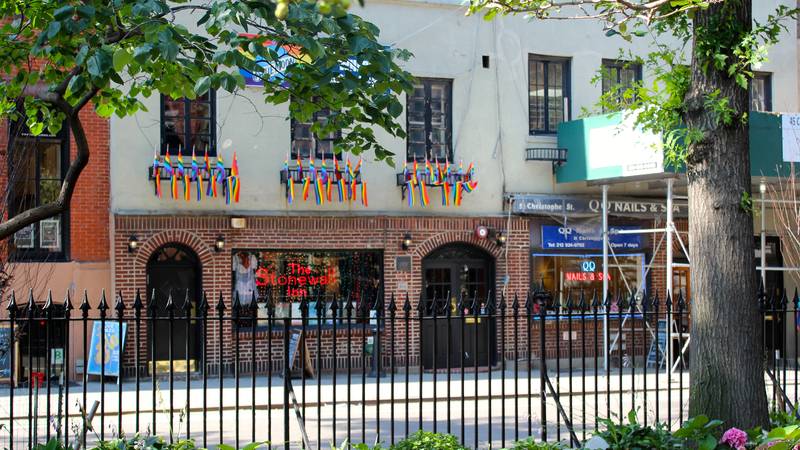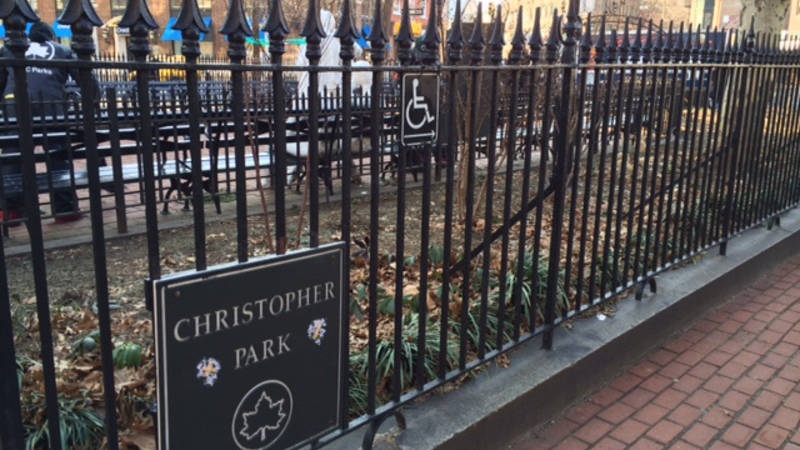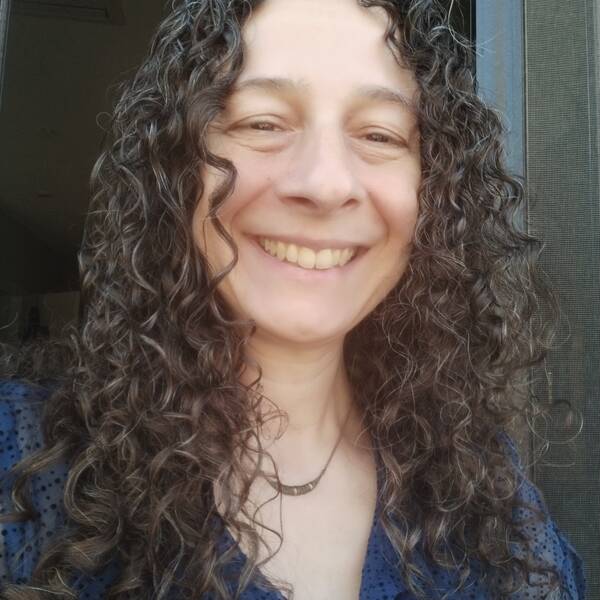The events behind America’s first national park site honoring LGBT history
Today, President Obama designated the area around the historic Stonewall Inn in New York City as America’s newest national monument and the only national park site dedicated to interpreting lesbian, gay, bisexual and transgender (LGBT) history.
Stonewall Makes History Again: Becomes First National Park Site Dedicated to LGBT History
After more than two years of building strong public support in the community, across the nation and in Congress, National Parks Conservation Association (NPCA) celebrates President Obama’s historic designation of…
See more ›This site represents a watershed moment in the modern LGBT civil rights movement, where a week-long uprising in 1969 sparked sustained determination among LGBT Americans to fight for full equality and civil and human rights.
I spoke with author and historian David Carter — who helped spearhead the 1998 effort to have the site listed on the National Register of Historic Places and who wrote the first comprehensive book on the uprising, “Stonewall: The Riots That Sparked the Gay Revolution” — to learn more about the significance of the site and the events that happened there. This interview was edited for length and clarity.
Q: You’ve said that the period before the Stonewall uprising was one of the most discriminatory in the history of the LGBT community in America. How did this cultural context set the stage for the uprising?
A: It’s natural to think of social and political progress as going forward, and that if things were bad in the 1970s and the 1960s, the further you go back in time, the worse it’s going to be — but that’s not actually the case. The rate of arrest for gay men and women went up greatly in New York City in the 1960s. This is, for most people, counterintuitive, because the 60s are synonymous with political and social progress and open-mindedness, including liberal attitudes toward sexuality.
The Cold War and the fear of communism and the atom bomb made people terrified. There was a feeling that men had to be 100% men and women had to be 100% women. There was no room for blurring the boundaries. It was true hysteria that resulted in this idea that there could not be any kind of softness, so to speak, on the part of men.
Q: Weren’t there also laws about people having to wear clothes appropriate to their gender — laws that were openly discriminatory?
A: In New York state, they took an old law and used it to target gay and transgender people. People could be arrested for appearing in public if they didn’t have on at least three articles of clothing that were designated as appropriate for their sex.

A National Park for Stonewall: FAQs
The Stonewall legacy is a part of the push for human rights and civil rights in the United States.
See more ›I was shocked when I read about the rate of arrests in the early to mid-60s in New York City. At that time, the one neighborhood that was really known in the United States as having a homosexual population was Greenwich Village. Some of the people I interviewed in my book said that they heard of it through word of mouth or read about it in a magazine.
Q: So Greenwich Village was a kind of beacon for the LGBT community?
A: All the evidence points to it being the number one — certainly not the only, but the most prominent — gay ghetto in America. The police clampdown was also probably more serious in Greenwich Village than anywhere else in America. Around ’64 and ’65, the arrest rate was around 150 people a week, on average. You have this tiny corner of America where all these gay people have fled, and an attempt to impose a severe police state there, which resulted in the explosion that was Stonewall.
Q: And June 28, 1969, became a pivotal moment at Stonewall because it was the first time LGBT people fought against the police and won?
A: No. It was hardly the first time gay people resisted oppression. For example, one of the early big successful fights was against censorship of “One.” The federal government said [in 1954] that this magazine was obscene simply because it discussed homosexuality and therefore could not be sent through the U.S. Post Office. The magazine challenged this all the way to the Supreme Court and won. In 1952, one of the founders of the Mattachine Society in Los Angeles, Dale Jennings, was arrested in a park as a result of entrapment, he claimed, and charged with lewd behavior. He fought the charges and also won. In 1965, there was a sit-in at a restaurant in Philadelphia called Dewey’s that was refusing to serve people who looked like they were homosexual. Gay people sat in and they changed their policy.
People say over and over that Stonewall was the beginning of the modern gay rights movement. It wasn’t. That began in 1950 with the founding of the Mattachine Society and more particularly, I would argue, with Frank Kameny, who was the first person to come along and say in 1961 that this was a civil rights movement and we have to use direct action and model ourselves on the black civil rights movement and demand full equality. I think Stonewall never would have happened without him.
Q: What made the history at Stonewall so significant?
A: Directly out of Stonewall came a new kind of gay organization that was much more militant — the Gay Liberation Front and the Gay Activists Alliance. There were others that are historically important, but the Gay Liberation Front had a definite impact on the success of the LGBT civil rights movement by finding a way to preserve the energy that came out of Stonewall. The Gay Activists Alliance found a way to not only preserve that energy but to multiply it, making the movement a mass movement and thereby giving it the power necessary to make political progress.
Q: So it wasn’t about precedent, but how it set off a larger movement?
A: Precisely. But there are other particular things about Stonewall. There were several uprisings before Stonewall of various kinds. Stonewall was the first one that happened on a massive scale. Other events involved maybe 50 or 100 people, but this involved thousands of people. It got into the media. Not just the local media — it went nationwide, even worldwide to some extent.

Untold Stories
The Park Service strives to tell the history of all Americans, but one group has gone almost entirely overlooked.
See more ›It was sustained, it was militant, and you could say it was successful in that gay people made the police retreat, and it took police a long time to clear the streets. The fact that it was a protracted, massive struggle in a gay area was shocking. It wasn’t just resistance, as had happened before on a smaller scale. This was mass resistance with a fair amount of violence. But most important, it created a new movement, which previous acts of resistance did not do. Stonewall also became important symbolically because it showed that courage could be effective. So what happened at Stonewall, the story of Stonewall, also helped to give LGBT people the courage to say, “I can be who I really am.”
Q: Can you tell me about the events of that first night in June of 1969 that sparked the uprising?
A: There’s an almost universal misperception that this was a typical raid, and I understand that from certain points of view, it did appear like a typical raid — but it was not.
It was a Mafia bar and the Mafia were paying off the local police precinct. The police tended to do ritual raids to keep the politicians and the citizens happy. The precinct would even call the bar ahead of time to warn them, and they tended to come early in the evening when there weren’t as many people there.
Seymour Pine [who led the raid on Stonewall] was a police officer who was brought in from another borough. He was not corruptible. He was ordered, soon after he got his position, to put Stonewall out of business. He’d figured out by that time that the Sixth Precinct was corrupt. He did not tip off the owners of the Stonewall. Usually they would raid in the middle of the week, maybe 10 o’clock at night. This raid came after midnight on a Friday night. The weather was very hot. School was out and more people were out on the streets. It was really a perfect storm.
To my knowledge, there had not been a raid like this before. It was the most popular gay bar in the city, possibly in the country, and it was jam-packed. And because the bar was not tipped off, they had a lot of liquor there. Pine needed to seize that liquor as evidence. The liquor, being Mafia liquor, was watered down. He wanted to test it to prove it was watered down and shut the bar down, so he brought a federal agent along on the raid. So a snowball led to an avalanche.

Christopher Park
See the irregular streets that helped participants in the Stonewall uprising fight back against police in 1969.
See more ›I also talk in my book about the social geography. This is not only the ghetto, this is the bull’s-eye of the ghetto. The heart was called the Corner, the intersection of Christopher Street and Greenwich Avenue, a block and a half from the Stonewall. You had a lot of pay phones at the other end of the block, where various streets, including Christopher Street, intersect with Seventh Avenue South, so it was easy for people to call their friends and say, “There’s a fight — come down and support us.”
It was right next to the Lion’s Head, a bar that was a haven for journalists. Three of the journalists who covered the event just happened upon it. You also had the Village Voice office at the end of the street. Another reporter, Howard Smith, was working there and saw what was happening and came down and investigated. You also had [prominent LGBT activist] Craig Rodwell. He wasn’t inside the bar. He was coming home from a bridge game and stumbled across it. The fact that it’s New York City makes these things possible. It’s not only the perfect storm, but the perfect matrix.
Q: In 1998, you helped spearhead the effort to list Stonewall on the National Register of Historic Places, which succeeded in 1999 and led to the site being named a National Historic Landmark in 2000. What was it about the site that made it important to recognize it nationally?
A: There had been an attempt on the 25th anniversary in 1994 to get the Stonewall listed, but one of the reasons it was rejected then was that the interior of the bar was not intact.
Many people have noticed before that the irregular layout of the streets in that area had contributed to the success of the riots. I took all the information I could find about the Stonewall Inn, including photocopying all the pages about the area around the Stonewall Inn in the two-volume historic designation report about the Village, and I went to the park across from the Stonewall Inn — Christopher Park, which is now the basis of the national monument — and read it. Reading those pages there while looking at the surrounding area gave me great insight about all of these factors coming together in one place — the social geography, the transportation nexus, how these one-way streets change directions and so forth.
To me, that was one of the most important insights I got into this history and what made it happen. Only the first night is about the inside of the bar. After that, the other five nights are all outside. Then I found out the gay street youth who were homeless [and were instrumental participants in the uprising], that Christopher Park was a hangout of theirs. It wasn’t just about the original Stonewall Inn bar. It was that whole larger context, the social and the physical geography, interacting in very specific ways.
Luckily, with the 1969 designation of Greenwich Village as a historic district, including the area around the Stonewall Inn, the essential layout of the streets had not changed. The buildings were pretty much as they had been in 1969. I would like to add that my coauthors of the nomination were preservationists Gale Harris, Andrew Dolkart and Jay Shockley, who were able to discuss aspects of the site from their perspective and whose contributions to the nomination succeeding were vital.
It was only in 2015 that the two buildings that comprised the original bar were listed as a New York City individual landmark, thereby finally granting legal protection for the physical buildings, protecting their integrity. To this day it is the city’s only LGBT individual landmark.
Q: So is it still possible to go to Christopher Park and get a sense of what it was like during the time of the uprising?
A: Yes. So much is still there. Even across Seventh Avenue from Christopher Park, there’s a bodega that used to be called Smilers, where the street kids used to go to buy food. The name has changed, but even that is still there. There’s still a strong street presence in the park — even that’s still there. Even in a world of cell phones, you’ll still see pay phones in that area where Christopher Street and Seventh Avenue intersect. It is a hub. It seems kind of like a spider web, how all the streets come together right at that point.
Lucian Truscott, who wrote about the riots for the Village Voice, was in the military and on leave that summer. When he went back to the Army afterward, he was taking a course about riot control. Having witnessed Stonewall, he counted how many intersections the police would have had to barricade and how many officers it would have taken — it would have taken a substantial number of police officers just to cordon off one block around the Stonewall Inn. They asked him to make that part of the course. Lucian Truscott then started teaching riot control to the U.S. Army based on Stonewall and the specific geography of that area, which is a noteworthy historic irony.
Q: What do you hope a national monument at Stonewall will accomplish?
A: Because homosexuality was considered by many to be the ultimate sin, there’s always been an attempt to keep it carefully out of view. There are many examples in history where facts about homosexuality and human sexual behavior as well as political and social history have been erased — either not recorded, or recorded and destroyed, or mentioned with only the most negative possible interpretation. Long before there was a gay political movement, there was a conscious attempt to suppress the history. Even in the 1960s, librarians would put books about homosexuality in locked cages. You had to go and ask for the key. That’s a powerful means of control. It also sends the unspoken message that you can’t talk about it — that it’s really, really taboo material.
Our history has not been seen as U.S. history or civil rights history or human rights history. It needs to become a demand of the LGBT civil rights movement that our history be included. That’s why I was so happy when the site got on the National Register and became a National Historic Landmark and got that kind of recognition. I didn’t even think about a national park or national monument at that time!
It’s about LGBT integration into the public history and into the consciousness of the nation.
David Carter is an author and historian with degrees from Emory University and the University of Wisconsin. He founded the Madison Committee for Gay Rights and helped to launch the nation’s second gay television series, “Glad To Be Gay.” In 1998, with a grant from the Greenwich Village Society for Historic Preservation, he summarized his research on the Stonewall uprising and worked with LGBT preservationists to write the nomination for the site to be listed on the National Register of Historic Places. The Stonewall site was added to the Register in 1999 and was designated a National Historic Landmark the following year. Carter published “Stonewall: The Riots That Sparked the Gay Revolution” in 2004 and was the consultant for a film on Stonewall for the American Experience series and a BBC radio documentary on Stonewall. Carter lives in New York City, where he is currently writing a biography of gay pioneer Frank Kameny.
About the author
-
 Jennifer Errick Associate Director of Digital Storytelling
Jennifer Errick Associate Director of Digital StorytellingJennifer co-produces NPCA's podcast, The Secret Lives of Parks, and writes and edits a wide variety of online content. She has won multiple awards for her audio storytelling.
-
General
-
- NPCA Region:
- Northeast
-
Issues


